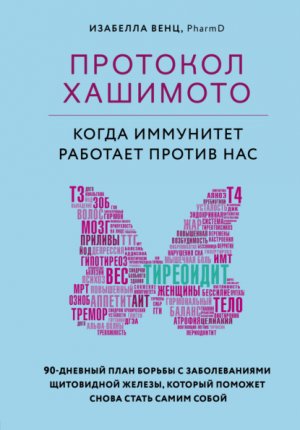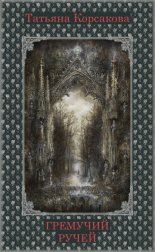ѕротокол ’ашимото: когда иммунитет работает против нас ¬енц »забелла

Arena, S., A. Latina, R. Baratta, G. Burgio, D. Gullo, and S.
Benvenga. 2015. УChronic lymphocytic thyroiditis: Could it be influenced by a petrochemical complex? Data from a cytological study in South-Eastern Sicily.Ф European Journal of Endocrinology 172 (4): 383Ц389. doi: 10.1530/eje-14-0864.
Bajaj, J., P. Salwan, and S. Salwan. 2016. УVarious possible toxicants involved in thyroid dysfunction: A review.Ф Journal of Clinical and Diagnostic Research 10 (1): FE01-03. doi: 10.7860/ jcdr/2016/15195.7092.
Baldini, M., A. Colasanti, A. Orsatti, et al. 2009.
УNeuropsychological functions and metabolic aspects in subclinical hypothyroidism: The effects of l-thyroxine.Ф Progress in Neuropsychopharmacology and Biological Psychiatry 33 (5): 854Ц859. doi: 10.1016/j.pnpbp.2009.04.009.
Bellis, M., L. Burke, P. Trickett, and F. Putnam. 1996.
УAntinuclear antibodies and thyroid function in sexually abused girls.Ф Journal of Traumatic Stress 9 (2): 369Ц378. doi: 10.1007/bf02110669.
Bertalot, G., G. Montresor, M. Tampieri, et al. 2004. УDecrease in thyroid autoantibodies after eradication of Helicobacter pylori infection.Ф Clinical Endocrinology 61 (5): 650Ц652. doi: 10.1111/j.1365Ц2265.2004.02137.x.
Bozkurt, N., B. Karbek, E. Cakal, H. Firat, M. Ozbek, and
T. Delibasi. 2012. УThe association between severity of obstructive sleep apnea and prevalence of HashimotoТs t hyroiditis.Ф Endocrine Journal 59 (11): 981Ц988. doi: 10.1507/ endocrj.ej12-0106.
Bunevicius, A., J. Leserman, and S. Girdler. 2012. УHypothalamic pituitary-thyroid axis function in women with a menstrually related mood disorder.Ф Psychosomatic Medicine 74 (8): 810Ц816. doi: 10.1097/psy.0b013e31826c3397.
Carta, M., A. Loviselli, M. Hardoy, et al. 2004. УThe link between thyroid autoimmunity (antithyroid peroxidase autoantibodies) with anxiety and mood disorders in the community: A field of interest for public health in the future.Ф BMC Psychiatry 4 (1). doi: 10.1186/1471-244x-4-25.
Contis, G., and T. Foley. 2015. УDepression, suicide ideation, and thyroid tumors among Ukrainian adolescents exposed as children to Chernobyl radiation.Ф Journal of Clinical Medicine Research 7 (5): 332Ц338. doi: 10.14740/jocmr2018w.
Costantini, A., and M. I. Pala. 2014. УThiamine and HashimotoТs thyroiditis: A report of three cases.Ф Journal of Alternative and Complementary Medicine 20 (3): 208Ц211. doi: 10.1089/ acm.2012.0612.
Daher, R. 2009. УConsequences of dysthyroidism on the digestive tract and viscera.Ф World Journal of Gastroenterology 15 (23): 2834. doi: 10.3748/wjg.15.2834.
Davies, T. 2016. УPathogenesis of HashimotoТs thyroiditis (chronic autoimmune thyroiditis).Ф Uptodate.com. открыто 30 августа 2016 года. http://www.uptodate.com/ contents/pathogenesis-of-hashimotos-thyroiditis-chronic-autoimmune-thyroiditis.
Drutel, A., F. Archambeaud, and P. Caron. 2013. УSelenium and the thyroid gland: More good news for clinicians.Ф Clinical Endocrinology 78 (2): 155Ц164. doi: 10.1111/cen.12066.
Duntas, L. 2009. УAutoimmunity: Does celiac disease trigger autoimmune thyroiditis?Ф Nature Reviews Endocrinology 5 (4): 190Ц191. doi: 10.1038/nrendo.2009.46.
Eglite, M., T. Zvagule, K. Rainsford, J. Reste, E. Curbakova, and N. Kurjane. 2009. УClinical aspects of the health disturbances in Chernobyl nuclear power plant accident clean-up workers (liquidators) from Latvia.Ф Inflammopharmacology 17 (3): 163Ц169. doi: 10.1007/ s10787-009-0001-4.
Farahid, O., N. Khawaja, M. Shennak, et al. 2014. УPrevalence of coeliac disease among adult patients with autoimmune hypothyroidism in Jordan.Ф Eastern Mediterranean Health Journal 20 (1): 51Ц55.
Fasano, A. 2011. УZonulin and its regulation of intestinal barrier function: The biological door to inflammation, autoimmunity, and cancer.Ф Physiological Reviews 91 (1): 151Ц175. doi: 10.1152/ physrev.00003.2008.
Ц. 2012. УLeaky gut and autoimmune diseases.Ф Clinical Reviews in Allergy & Immunology 42 (1): 71Ц78. doi: 10.1007/ s12016-011-8291-x.
Friedman, M., S. Wang, J. Jalowiec, G. McHugo, and A. McDonagh-Coyle. 2005. УThyroid hormone alterations among women with posttraumatic stress disorder due to childhood sexual abuse.Ф Biological Psychiatry 57 (10): 11861192. doi: 10.1016/j.biopsych.2005.01.019.
Galletti, P., and G. Joyet. 1958. УEffect of fluorine on thyroidal iodine metabolism in hyperthyroidism.Ф Journal of Clinical Endocrinology & Metabolism 18 (10): 1102Ц1110. doi: 10.1210/jcem-18-10-1102.
Garber, J., R. Cobin, H. Gharib, et al. 2012. УClinical practice guidelines for hypothyroidism in adults: Cosponsored by the American Association of Clinical Endocrinologists and the American Thyroid Association.Ф '1 Thyroid 22 (12): 12001235. doi: 10.1089/thy.2012.0205.
Gartner, R. 2002. УSelenium supplementation in patients with autoimmune thyroiditis decreases thyroid peroxidase antibodies concentrations.Ф Journal of Clinical Endocrinology & Metabolism 87 (4): 1687Ц1691. doi: 10.1210/jc.87.4.1687.
Gierach, M., J. Gierach, A. Skowroska, et al. 2012. УHashimotoТs thyroiditis and carbohydrate metabolism disorders in patients hospitalised in the Department of Endocrinology and Diabetology of Ludwik Rydygier Collegium Medicum in Bydgoszcz between 2001 and 2010.Ф Endokrynologia Polska 63 (1): 14Ц17.
Hadithi, M. 2007. УCoeliac disease in Dutch patients with HashimotoТs thyroiditis and vice versa.Ф World Journal of Gastroenterology 13 (11): 1715. doi: 10.3748/wjg.v13.i11.1715.
Haviland, M., J. Sonne, D. Anderson, et al. 2006. УThyroid hormone levels and psychological symptoms in sexually abused adolescent girls.Ф Child Abuse & Neglect 30 (6): 589Ц598. doi: 10.1016/j.chiabu.2005.11.011.
Heckl, S., C. Reiners, A. Buck, A. Schafer, A. Dick, and M. Scheurlen. 2015. УEvidence of impaired carbohydrate assimilation in euthyroid patients with HashimotoТs thyroidit is.Ф European Journal of Clinical Nutrition 70 (2): 222Ц228. doi: 10.1038/ejcn.2015.167.
Hoang, T., C. Olsen, V. Mai, P. Clyde, and M. Shakir. 2013. УDesiccated thyroid extract compared with levothyroxine in the treatment of hypothyroidism: A randomized, double-blind, crossover study.Ф Journal of Clinical Endocrinology & Metabolism 98 (5): 1982Ц1990. doi: 10.1210/jc.2012Ц4107.
Hofling, D., M. Chavantes, M. Acencio, et al. 2014.
УEffects of low-level laser therapy on the serum TGF-B1 concentrations in individuals with autoimmune thyroiditis.Ф Photomedicine and Laser Surgery 32 (8): 444Ц449. doi: 10.1089/pho.2014.3716.
Hofling, D., M. Chavantes, A. Juliano, et al. 2010. УLow-level laser therapy in chronic autoimmune thyroiditis: A pilot study.Ф Lasers in Surgery and Medicine 42 (6): 589Ц596. doi: 10.1002/lsm.20941.
Hybenova, M., P. Hrda, J. Prochazkova, V. Stejskal, and I. Sterzl. 2010. УThe role of environmental factors in autoimmune thyroiditis.Ф Neuroendocrinology Letters 31 (3): 283Ц289.
Jack, A., A. Dawson, K. Begany, et al. 2013. УfMRI reveals reciprocal inhibition between social and physical cognitive domains.Ф Neuroi 66: 385Ц401. doi: 10.1016/j. neuroi.2012.10.061.
Janegova, A., P. Janega, B. Rychly, K. Kuracinova, and P. Babal. 2015. УThe role of Epstein-Barr virus infection in the development of autoimmune thyroid diseases.Ф Endokrynologia Polska 66 (2): 132Ц136. doi: 10.5603/ EP.2015.0020.
Joung J., Y. Cho, S. Park, et al. 2014. УEffect of iodine restriction on thyroid function in subclinical hypothyroid patients in an iodine-replete area: A long period observation in a large-scale cohort.Ф Th Thyroid 24 (9): 1361Ц1368. doi: 10.1089/thy.2014.0046.
Juby, A., M. Hanly, and D. Lukaczer. 2016. УClinical challenges in thyroid disease: Time for a new approach?Ф Maturitas 87: 72Ц78. doi: 10.1016/j.maturitas.2016.02.001.
Katarzyna, K., C. Jarosz, S. Agnieszka, et al. 2013. УL-thyroxine stabilizes autoimmune inflammatory process in euthyroid nongoitrous children with HashimotoТs thyroiditis and type 1 diabetes mellitus.Ф Journal of Clinical Research in Pediatric Endocrinology 5 (4): 240Ц244. doi: 10.4274/jcrpe.1136.
Kogelnik, A., K. Loomis, M. Hoegh-Petersen, F. Rosso, C. Hischier, and J. Montoya. 2006. УUse of valganciclovir in patients with elevated antibody titers against human herpesvirus-6
(HHV-6) and Epstein-Barr virus (EBV) who were experiencing central nervous system dysfunction including long-standing fatigue.Ф Journal of Clinical Virology 37: S33-S38. doi: 10.1016/ s1386-6532(06)70009-9.
Kvantchakhadze, R. 2002. УWobenzym in the complex treatment of autoimmune thyroiditis.Ф International Journal of Immunorehabilitation 4 (1): 114.
Lauritano, E., A. Bilotta, M. Gabrielli, et al. 2007. УAssociation between hypothyroidism and small intestinal bacterial overgrowth.Ф Journal of Clinical Endocrinology & Metabolism 92 (11): 4180Ц4184. doi: 10.1210/jc.2007Ц0606.
Luiz, H., D. Goncalves, T. Silva, et al. 2014. УIgG4-related HashimotoТs thyroiditis: A new variant of a well known disease.Ф Arquivos Brasileiros de Endocrinologia & Metabologia 58 (8): 862Ц868. doi: 10.1590/0004-2730000003283.
Mansournia, N., M. Mansournia, S. Saeedi, and J. Dehghan. 2014. УThe association between serum 25OHD levels and hypothyroid HashimotoТs thyroiditis.Ф Journal of Endocrinological Investigation 37 (5): 473Ц476. doi: 10.1007/ s40618-014-0064-y.
Mariani, M., A. Palpacelli, A. Mussoni, and A. Rossodivita. 2013. УHashimotoТs thyroiditis: An accidental discovery of a lingual thyroid in a 7-year-old child.Ф BMJ Case Reports, August 21. doi: 10.1136/bcr-2013-200247.
Mehrdad, M., F. Mansour-Ghanaei, F. Mohammadi, F. Joukar, S. Dodangeh, and R. Mansour-Ghanaei. 2012. УFrequency of celiac disease in patients with hypothyroidism.Ф Journal of Thyroid Research 2012: 1Ц6. doi: 10.1155/2012/201538.
Messina, G., T. Esposito, J. Lobaccaro, et al. 016. УEffects of low-carbohydrate diet therapy in overweight subject with autoimmune thyroiditis: Possible synergism with Ch R EBP.Ф Drug Design, Development and Therapy 214 (10): 2939Ц2946. doi: 10.2147/dddt.s106440.
Moncayo, R., and H. Moncayo. 2015a. УProof of concept of the WOMED model of benign thyroid disease: Restitution of thyroid morphology after correction of physical and psychological stressors and magnesium supplementation.Ф BBA Clinical 3: 113Ц122. doi: 10.1016/j. bbacli.2014.12.005.
Ц. 2015b. УThe WOMED model of benign thyroid disease: Acquired magnesium deficiency due to physical and psychological stressors relates to dysfunction of oxidative phosphorylation.Ф BBA Clinical 3: 44Ц64. doi: 10.1016/j. bbacli.2014.11.002.
Mussig, K., A. Kunle, A. Sauberlich, et al. 2012. УThyroid peroxidase antibody positivity is associated with symptomatic distress in patients with HashimotoТs thyroiditis.Ф Brain, Behavior, and Immunity 26 (4): 559Ц563. doi: 10.1016/j. bbi.2012.01.006.
Naiyer, A., J. Shah, L. Hernandez, et al. 2008. УTissue transglutaminase antibodies in individuals with celiac disease bind to thyroid follicles and extracellular matrix and may contribute to thyroid dysfunction.Ф Thyroid 18 (11): 1171Ц1178. doi: 10.1089/thy.2008.0110.
Nanan, R., and J. Wall. 2010. УRemission of HashimotoТs thyroiditis in a twelve-year-old girl with thyroid changes documented by ultrasonography.Ф Thyroid 20 (10): 1187Ц1190. doi: 10.1089/ thy.2010.0102.
Nexo, M., T. Watt, B. Cleal, et al. 2014. УExploring the experiences of people with hypo-and hyperthyroidism.Ф Qualitative Health Research 25 (7): 945Ц953. doi: 10.1177/1049732314554093.
Pacini, F., T. Vorontsova, E. Molinaro, et al. 1998. УPrevalence of thyroid autoantibodies in children and adolescents from Belarus exposed to the Chernobyl radioactive fallout.Ф Lancet 352 (9130): 763Ц766. doi: 10.1016/s0140-6736(97)11397-6.
Patil, B., and G. Giri. 2012. УA clinical cae report of HashimotoТs thyroiditis and its impact on the treatment of chronic periodontitis.Ф Nigerian Journal of Clinical Practice 15 (1): 112. doi: 10.4103/1119-3077.94113.
Patil, B., T. Gururaj, and S. Patil. 2011. УProbable autoimmune causal relationship between periodontitis and HashimotoТs thyroiditis: A systemic review.Ф Nigerian Journal of Clinical Practice 14 (3): 253. doi: 10.4103/1119-3077.86763.
Peckham, S., D. Lowery, and S. Spencer. 2015. УAre fluoride levels in drinking water associated with hypothyroidism prevalence in England? A large observational study of GP practice data and fluoride levels in drinking water.Ф Journal of Epidemiology & Community Health 69 (7): 619Ц624. doi: 10.1136/jech-2014-204971.
Plaza, A., L. Garcia-Esteve, C. Ascaso, et al. 2010. УChildhood sexual abuse and hypothalamus-pituitary-thyroid axis in postpartum major depression.Ф Journal of Affective Disorders 122 (1Ц2): 159Ц163. doi: 10.1016/j.jad.2009.07.021.
Popawska-Kita, A., M. Kociuszko-Zdrodowska, K. Siewko, et al. 2015. УHigh serum IgG4 concentrations in patients with HashimotoТs thyroiditis.Ф International Journal of Endocrinology 2015: 1Ц6. doi: 10.1155/2015/706843.
Prummel, M., and W. Wiersinga. 2005. УThyroid peroxidase autoantibodies in euthyroid subjects.Ф Best Practice & Research Clinical Endocrinology & Metabolism 19 (1): 1-15. doi: 10.1016/j. beem.2004.11.003.
Rajic, B., J. Arapovic, K. Raguz, M. Boskovic, S. Babi, and S. Masla. 2015. УEradication of Blastocystis hominis prevents the development of symptomatic HashimotoТs thyroiditis: A case report.Ф Journal of Infection in Developing Countries 9 (7): 788Ц791. doi: 10.3855/jidc.4851.
Rotondi, M., L. de Martinis, F. Coperchini, et al. 2014. УSerum negative autoimmune thyroiditis displays a milder clinical picture compared with classic HashimotoТs thyroiditis.Ф
European Journal of Endocrinology 171 (1): 31Ц36. doi: 10.1530/ eje-14-0147.
Sategna-Guidetti, C. 2001. УPrevalence of thyroid disorders in untreated adult celiac disease patients and effect of gluten withdrawal: An Italian multicenter study.Ф American Journal of Gastroenterology 96 (3): 751Ц757. doi: 10.1016/ s0002-9270(00)02410-2.
Staii, A., S. Mirocha, K. Todorova-Koteva, S. Glinberg, and J. Jaume. 2010. УHashimoto thyroiditis is more frequent than expected when diagnosed by cytology which uncovers a pre-clinical state.Ф Thyroid Research 3 (1): 11. doi: 10.1186/1756-6614-3-11.
Sterzl, I., J. Prochazkova, and P Hrda. 2006. УRemoval of dental amalgam decreases anti-TPO and anti-Tg autoantibodies in patients with autoimmune thyroiditis.Ф Neuroendocrinology Letters 27, suppl. 1: 25Ц30.
Strieder, T. 2008. УPrediction of progression to overt hypothyroidism or hyperthyroidism in female relatives of patients with autoimmune thyroid disease using the Thyroid Events Amsterdam (THEA) score.Ф Archives of Internal Medicine 168 (15): 1657. doi: 10.1001/archinte.168.15.1657.
Sugiyama, A., H. Nishie, S. Takeuchi, M. Yoshinari, and M.
Furue. 2015. УHashimotoТs disease is a frequent comorbidity and an exacerbating factor of chronic spontaneous urticaria.Ф Allergologia etImmunopathologia 43 (3): 249Ц253. doi: 10.1016/j. aller.2014.02.007.
Sukran, D., B. Omer, S. Damla Goksen, and 0. Samim. 2011. УClinical course of HashimotoТs thyroiditis and effects of levothyroxine therapy on the clinical course of the disease in children and adolescents.Ф Journal of Clinical Research in Pediatric Endocrinology 3 (4): 192Ц197. doi: 10.4274/ jcrpe.425.
Toulis, K., A. Anastasilakis, T. Tzellos, D. Goulis, and D.
Kouvelas. 2010. УSelenium supplementation in the treatment of HashimotoТs thyroiditis: A systematic review and meta-analysis.Ф Thyroid 20 (10): 1163Ц1173. doi: 10.1089/ thy.2009.0351.
Vojdani, A., and I. Tarash. 2013. УCross-reaction between gliadin and different food and tissue antigens.Ф Food and Nutrition Sciences 4 (1): 20Ц32. doi: 10.4236/fns.2013.41005.
Vykhovanets, E., V. Chernyshov, I. Slukvin, et al. 1997. У131I dosedependent thyroid autoimmune disorders in children living around Chernobyl.Ф Clinical Immunology and Immunopathology 84 (3): 251Ц259. doi: 10.1006/clin.1997.4379.
Wang, J., S. Lv, G. Chen, et al. 2015. УMeta-analysis of the association between vitamin D and autoimmune thyroid disease.Ф Nutrients 7 (4): 2485Ц2498. doi: 10.3390/nu7042485.
Wentz, I. 2015. УTop 9 takeaways from 2232 people with HashimotoТs.Ф Thyroid Pharmacist. ќткрыто 30 августа 2016 года. http://www.thyroidpharmacist.com/blog/ top-10-takeaways-from-2232-people-with-hashimotos.
Wentz, I., and M. Nowosadzka. 2013. HashimotoТs Thyroiditis. Lexington, KY: Wentz, LLC.
Xu, J., X. Liu, X. Yang, et al. 2011. УSupplemental selenium alleviates the toxic effects of excessive iodine on thyroid.Ф Biological Trace Element Research 141 (1Ц3): 110Ц118. doi: 10.1007/s12011-010-8728-8.
Yang, S. 2010. УExposure to flame retardants linked to changes in thyroid hormones.Ф Berkeley News, June 21. ќткрыто 19 окт€бр€ 2016 года. http://news.berkeley.edu/2010/06/21/ pbde.






